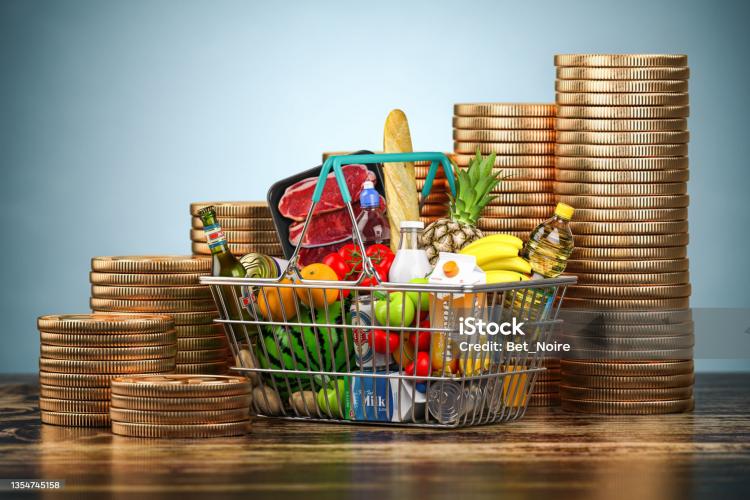
In a manner of speaking, for the market observers and specialists who participated in the polls to forecast the outcome of the bi-monthly December 6-8, 2023 meeting of the MPC, the choice of ‘no change' was the most logical and obvious at the same breath. The RBI indeed kept its policy rate unchanged at 6.50 per cent for a fifth consecutive time. The decision was unanimous although on the continuance of ‘withdrawal of accommodation’ as the stance of monetary policy, there was one dissent, as in the previous meeting.
India’s equity market which was on a kind of roll in the aftermath of the release of the 2023-24 second quarter real GDP growth at 7.6 per cent on December 1, rose further after the policy, with the NIFTY 50 index touching an all-time high of 21,000. The prices of government securities remained more or less unchanged, though.
Growth and inflation prospects
Real GDP growth projection for 2023-24 has been raised by the RBI from 6.5 per cent to 7 per cent, which is a tad higher than similar upward revisions made by a few Indian banks and brokerages in the wake of the release of the second quarter GDP data. The projection for CPI for 2023-24 has been kept unchanged at 5.4 per cent. The RBI expects CPI inflation in the first three quarters of 2024-25 to be lower and closer to the target of 4 per cent.
The RBI sounded more confident in stating its resolve to align headline inflation with the target of 4 per cent on the back of CPI inflation falling by about 2 percentage points since the last meeting of the MPC to 4.9 per cent in October, 2023. That drop was caused by a sharp correction in the prices of certain vegetables, deflation in fuel and a broad-based moderation in core inflation.
Inflation expectations of households as well as business firms have exhibited a moderating trend in recent months. As per the latest round of inflation expectations survey of households conducted by the RBI, between September, 2022 and November, 2023 inflation expectations for 3 months ahead and 1 year ahead declined by 170 and 90 basis points, respectively. Further, inflation expectations reverted to single-digits for the first time since the onset of the Covid-19 pandemic. Similarly, the business inflation expectations survey conducted by the IIM, Ahmedabad in October, 2023 found that businesses expected one year ahead CPI headline inflation to be 4.73 per cent, down by 27 basis points from 5.00 per cent reported in August, 2023. Overall, the inflation environment is much better now than was the case last year.
Supply side shocks – a challenge to contend with
While the RBI is of the view that the tightening of the policy rate by 250 basis points and draining out excess liquidity since May, 2022 have worked well so far, it is well aware of the supply side shocks that have ‘become more frequent and intense’. The task to keep food prices under control in the lead up to the general elections in 2024 is now of high priority and the RBI can and does expect ‘pro-active’ supply side interventions from the government in this regard.
Food inflation, which was in double-digits in July, fell to 6.2 per cent in October, 2023, with a correction in vegetable prices. However, inflation pressures persisted across various sub-groups, such as cereals, pulses and spices, and pick-up in inflation in eggs, fruits and sugar has meant that food inflation in October was still elevated. As per some analyses, food inflation in India is rising structurally, driven by higher vegetable and foodgrain prices. Vegetables, with a combined weight of 6 per cent in the CPI basket are one of its most volatile components and price spikes are becoming more common than before. Vegetable inflation averaged 5.7 per cent during 2020-23, compared to its near absence during the previous three fiscal years, mainly on account of a 9.1 per cent increase in the prices of tomatoes, onions and potatoes. Rising disposable income and vulnerability of vegetable and other crops to very large swings in precipitation levels caused by the El Nino effect are the proximate structural factors that will likely have a bearing on the overall inflation performance of the Indian economy in the years to come. Viewed from this perspective, the full import of the MPC’s observation that recurring food price shocks are impeding the ongoing disinflation process becomes apparent and clear.
In all likelihood, this issue will rear its head from time to time. One hopes that both the Central and the State governments will formulate and adopt long-term strategies to deal with all major supply side bottlenecks and constraints relating to food items, including those emanating from climate change. The RBI, on its part, should stay alert to the risk of supply side shocks becoming generalised.
In this policy, the RBI has not provided any clue as to when the next easing cycle will commence. However, the financial markets have already started to think on these lines. There seems to be a broad consensus that that the policy rate has reached its peak. Although there is a growing speculation that a rate cut can happen in the third quarter of 2024-25, it is not clear what plausible scenarios of growth and inflation could or would lead to this. Barring extraordinary circumstances, the growth momentum of the economy is unlikely to lose steam in the near future. This being the case, any rate cut will be unlikely till such time that CPI inflation falls further and remains close to 4 per cent for a few months in a row. But that point is not in sight yet.
(The writer is a former central banker and a consultant to the IMF) (Through The Billion Press)



